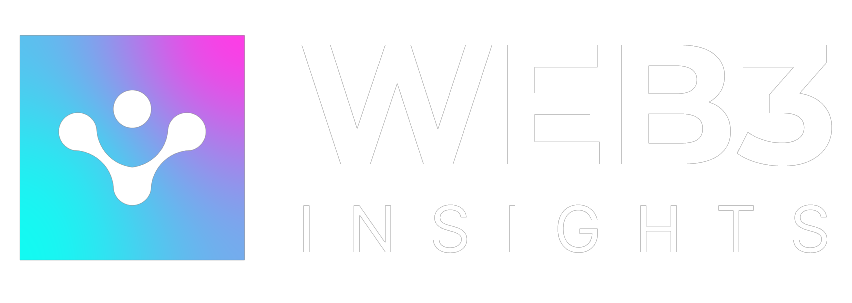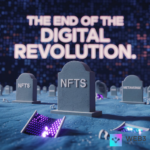
Non-fungible tokens (NFTs) have taken the digital world by storm, offering a revolutionary way to own and trade unique digital assets. If you’re looking to buy or sell NFTs, it’s essential to know where to go. NFT marketplaces specialize in allowing users to mint, buy, and sell NFTs in a secure, decentralized environment. With so many marketplaces available today, choosing the right one can be overwhelming, especially if you’re new to the NFT space.
In this article, we’ll explore the top 10 NFT marketplaces that cater to different needs. From platforms specializing in high-end digital art to those offering user-friendly interfaces for casual traders, these marketplaces will help you make informed decisions when you decide to buy or sell NFTs.
1. OpenSea

OpenSea, launched in 2017, is the largest NFT marketplace, offering a wide range of digital assets like art, music, and virtual worlds. It’s free to sign up and browse, with support for over 150 payment tokens, including Ethereum, Solana, and USDC.
The platform is user-friendly, allowing easy NFT creation (“minting”), and offers gas-free minting via Polygon to avoid Ethereum’s high fees. OpenSea charges a 2.5% transaction fee and is open to all creators, but artists may need to manage their marketing. It’s an ideal platform for beginners looking to buy, sell, or mint NFTs.
2. Rarible

Rarible is a marketplace where users can buy or sell NFTs, including collectibles, art, and more, using Tezos, Flow, or Ethereum. It charges a 2.5% fee plus gas fees but stands out by allowing transactions with credit cards and fiat currencies.
Rarible’s $RARI token gives holders the ability to vote on platform decisions. A 2021 partnership with Adobe helps protect and verify NFT metadata. Although Rarible’s interface can confuse users, it stands out as a top marketplace for its innovation, decentralization, and strong network connections. Creators must verify their accounts to participate fully.
3. SuperRare

SuperRare is building a marketplace for digital creators, featuring NFTs such as art, videos, and 3D images. All purchases are made using Ethereum. Recently, SuperRare launched its own Ethereum-based token, which allows users to find and curate new talent on the platform. Like Rarible, SuperRare’s NFTs can also be bought or sold on OpenSea.
SuperRare is known for its high-quality CryptoArt and music NFTs, offering top-notch, curated artwork for collectors. However, getting accepted as a creator can be challenging. Artists need an exceptional portfolio and a strong social media presence. If accepted, their work gains greater visibility compared to general marketplaces like OpenSea.
4. KnownOrigin

KnownOrigin is a curated NFT art platform where getting accepted as an artist can be challenging. However, unlike many other curated platforms, you don’t need a large following or established reputation; an exceptional portfolio is what truly matters.
The platform also offers a ‘Trending’ feature, which helps promote artists and allows collectors to discover unique art.
5. Foundation

Foundation offers a simple, no-frills way to bid on digital art, with sales conducted using Ethereum.. Since the marketplace’s launch in early 2021, it has sold more than $100 million of NFTs.
The Foundation community invites artists to the platform, and buyers only need a crypto wallet with Ethereum to start making purchases. If you want a quick and easy way to start creating your NFTs, Foundation might not be the best place to start, but you can easily browse plenty of artwork on the marketplace.
6. Axie Marketplace

Axie Marketplace serves as the official platform for the Axie Infinity game, where players can purchase and train mythical creatures known as Axies. Players use these Axies in battles against others to earn rewards. In addition to Axies, players can buy land and other in-game items, all available as NFTs for use in the game.
Axie Infinity’s tokens, called Axie Shards, are based on the Ethereum blockchain, making them tradeable not only on the Axie Marketplace but also on various NFT platforms and cryptocurrency exchanges like Coinbase.
7. Binance NFT

Binance NFT is a prominent player in the NFT marketplace, offering a wide range of digital products such as artwork, gaming items, and collectibles. If you’re wondering, “What’s the best marketplace to sell art?” Binance NFT is a top choice.
What sets Binance NFT apart is its user-friendly interface and low fees, charging only 1% per trade. As a leading name in the crypto industry with its own blockchain, Binance enjoys a strong position in the NFT space, giving it a competitive edge.
8. Mintable

Mintable is a versatile NFT marketplace where users can buy and sell a variety of digital assets, including art, collectables, game items, and music. It offers a gasless minting option, making it an ideal platform for beginners and creators comfortable handling their marketing.
Supported by billionaire Mark Cuban, Mintable aims to function as an open marketplace, similar to OpenSea. To buy or sell NFTs on the platform, users need Ethereum. Mintable allows creators from various fields, such as photography and music, to mint and sell their work as digital assets.
Aspiring NFT collectors or creators must first purchase Ethereum from a crypto exchange and then connect their wallet to Mintable to bid or buy on the platform.
9. Nifty Gateway

Nifty Gateway is a premium marketplace for CryptoArt, collaborating with renowned artists, athletes, brands, and creators to offer highly exclusive NFTs to collectors. Known for its exclusivity, it’s one of the hardest NFT platforms to gain acceptance on, typically working only with top-tier artists and creative celebrities.
The platform has facilitated sales for prominent digital artists like Beeple and musician Grimes. Operated by the crypto exchange Gemini, owned by the Winklevoss twins, Nifty Gateway features NFTs, or “Nifties,” built on Ethereum.
In addition to curating artwork, Nifty Gateway stores NFTs for buyers, meaning Nifty Gateway and Gemini securely manage them instead of the buyer holding them in a personal wallet. While this might not appeal to collectors seeking greater control, the platform allows purchases and sales in fiat currency (e.g., U.S. dollars), removing the need for prior cryptocurrency purchases.
10. Blur

Blur entered the NFT market on October 19, 2022, offering a combined marketplace and aggregator. It quickly stood out by providing fast and efficient tools for buying and selling NFTs across multiple platforms at once. What really caught people’s attention was the lack of platform fees and the way Blur rewarded users for paying royalties.
Later, the platform updated its royalty policy to enforce payments on certain NFTs. To kick off its launch, Blur gave out ‘care package’ airdrops, which promised holders an unknown amount of $BLUR tokens when they launched in January 2023.
Conclusion
The top 10 NFT marketplaces provide various platforms where users can buy, sell, or trade NFTs, each offering distinct features, and rules, and catering to specific niches. It’s essential to explore and compare these options to find the one that best fits your needs.
By learning about the unique features and purposes of each marketplace, you can make informed decisions on how to effectively trade digital assets. Take time to research and choose the platform that aligns with your goals.







